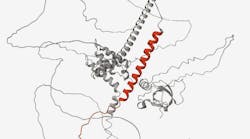Neuroscience researchers at Wayne State University published a review article that confirms the usefulness of neurofilament light (NfL) blood levels to predict the likelihood and rate of progression of neurodegeneration in Alzheimer’s disease.
Blood-based NfL is a minimally invasive and easily accessible biomarker, making it a useful clinical biomarker. Youjin Jung and Jessica Damoiseaux, Ph.D., analyzed existing literature to examine the association between serum or plasma NfL and structural/functional brain imaging measures of neurodegeneration from MRI or PET imaging. Jung is a doctoral student in the Behavioral and Cognitive Neuroscience program and a trainee at WSU’s Institute of Gerontology. Damoiseaux is an associate professor in the Institute of Gerontology and the Department of Psychology.
Though NfL levels also increase in typical aging as a non-specific marker of neuronal damage, the levels, as well as the rate of increase, seen in Alzheimer’s dementia are higher. Jung and Damoiseaux concluded that research indicates that high blood levels of NfL reflect the severity of atrophy in several overlapping brain regions, especially the medial temporal lobe. Higher serum NfL is also correlated with more severe brain glucose hypometabolism, as well as diminished white matter integrity, in persons on the Alzheimer’s continuum.
The review of the cross-sectional and longitudinal literature showed that blood NfL levels consistently predicted the severity of atrophy and glucose metabolism in brain areas commonly affected by Alzheimer’s pathology. The work by Jung and Damoiseaux highlights that blood NfL is a useful prognostic marker for predicting the progression of neurodegeneration, as well as being a useful marker to assess the risk that a cognitively unimpaired person with a higher risk for Alzheimer’s disease will show abnormal changes in brain structure and function.





